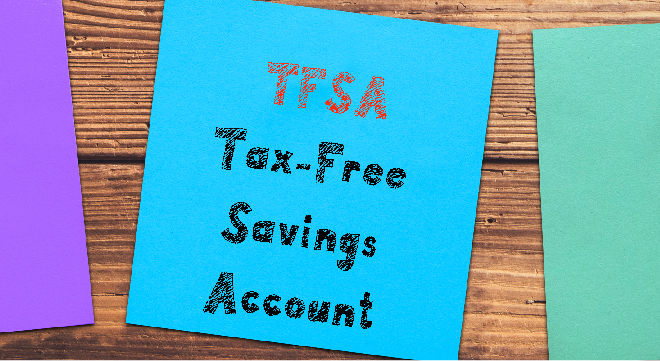With the end of the tax year fast approaching, investors who haven’t already done so should be considering making use of their R36 000 annual contribution to a tax-free savings account (TFSA).
Jaco van Tonder, the director of adviser services at Ninety One, has shared the following insights, based on the asset manager’s conversations with financial advisers, about how to best to use a TFSA as one of several different tax-efficient savings tools.
A related article looks at how living annuitants can use a TFSA to maximise their retirement income.
1. Retirement fund savings come first
The first savings priority for any investor is their contribution to some type of registered retirement fund (via their employer or a retirement annuity), Van Tonder says.
“In general, investors should first provide for an adequate contribution to their retirement fund before taking out a TFSA.”
In 2020, amid the impact of Covid-19 on the economy and markets, South African retirement funds were on the receiving end of some bad publicity. Specifically, the investment restrictions imposed on retirement funds via regulation 28 attracted significant media coverage. Many market commentators questioned whether retirement funds in South Africa still represent a good investment.
Although this is an important debate for South African investors, the tax benefits available to South African retirement fund investors remain significant; particularly when compounded over 20 years or more, these benefits dwarf those of a TFSA, Van Tonder says.
“We remain convinced that retirement funds present good value to investors given the tax benefits.”
Second, investors should use their annual tax-free interest exemption (R23 800 a year for individuals under age 65). At current money market rates of between 4% and 5%, an investor in South Africa can keep up to R400 000 in a fixed income fund before paying any tax on the interest.
“Ideally, this allowance should be used to set up an investor’s emergency cash pool.”
2. The tax benefits compound exponentially over time
When TFSAs were launched, many investors and advisers underestimated the extent to which the tax benefits on TFSAs would compound over time. This was because, unlike a retirement fund, the TFSA contribution is not tax-deductible upfront, making it difficult to calculate the rand value of the tax benefits, Van Tonder says.
These points are best illustrated by an example that projects a TFSA’s fund values over 20 years based on the following assumptions:
- An investor contributes the maximum annual amount of R36 000 (National Treasury does not increase this limit).
- The R500 000 lifetime limit is not increased, and contributions cease when this limit is reached.
- An annual investment return of 10% and an inflation rate of 6% a year.
- A 50/50 split in investment return between interest and capital gain, resulting in an effective combined tax rate of 30% on total investment returns.

The results are:
- The investment return takes a long time to accumulate, and really becomes significant after only 10 years.
- In the first five years, the impact of the tax benefit is negligible.
- After 20 years, the tax saving represents more than 20% of the total fund value.
Van Tonder says that from a tax benefit perspective, it does not make sense for an investor to use a TFSA for an investment horizon of shorter than five years. This position, however, changes drastically after 10 years because of the compounding effect of long-term investment returns.
3. Don’t waste your lifetime contributions
The current TFSA product rules do not allow an investor to recover any part of their lifetime TFSA contribution limit if they dip into the TFSA assets. Every time an investor uses part of their TFSA contribution allowance, that allowance is gone forever. Withdrawals from a TFSA therefore waste part of an investor’s lifetime contribution allowance – ideally something to be avoided, Van Tonder says.
4. Investment portfolio should be consistent with the investment horizon
Van Tonder says there are two key considerations when constructing an investment portfolio for a TFSA investment:
- As highlighted above, TFSA investments should be 10-year or longer investments, and investment portfolios should reflect this long-term investment focus.
- Since TFSAs do not attract income tax or CGT, the risk-return characteristics of TFSA portfolios are neutral to whether returns come from capital gain, interest or dividends.
The simplest way to look at this problem is to evaluate different investment strategies with reference to a long-term return and volatility measure and see how they stack up.
The graph below shows the 15-year annualised return and volatility statistics for several potential TFSA investment options.

The graph illustrates what we know intuitively: more conservative, fixed income-orientated portfolios merely reduce the likely long-term investment returns without really adding anything to the portfolio (since long-term investors should not be concerned about volatility).
Second, even though fixed income investments seem attractive because they appear to maximise the tax benefit for the investor in the short term, they disappoint in the long term because of their significantly lower total returns.
Van Tonder says it seems that a good starting point for most TFSA investors is to look at unit trust funds from the South African multi-asset high equity sub-category, or something similar. These funds have historically produced attractive long-term risk-return trade-offs.
“Given that TFSA investment portfolios are not restricted by regulation and are long term in nature, investors with time horizons exceeding 10 years should even consider more aggressive investment portfolios,” he says.



